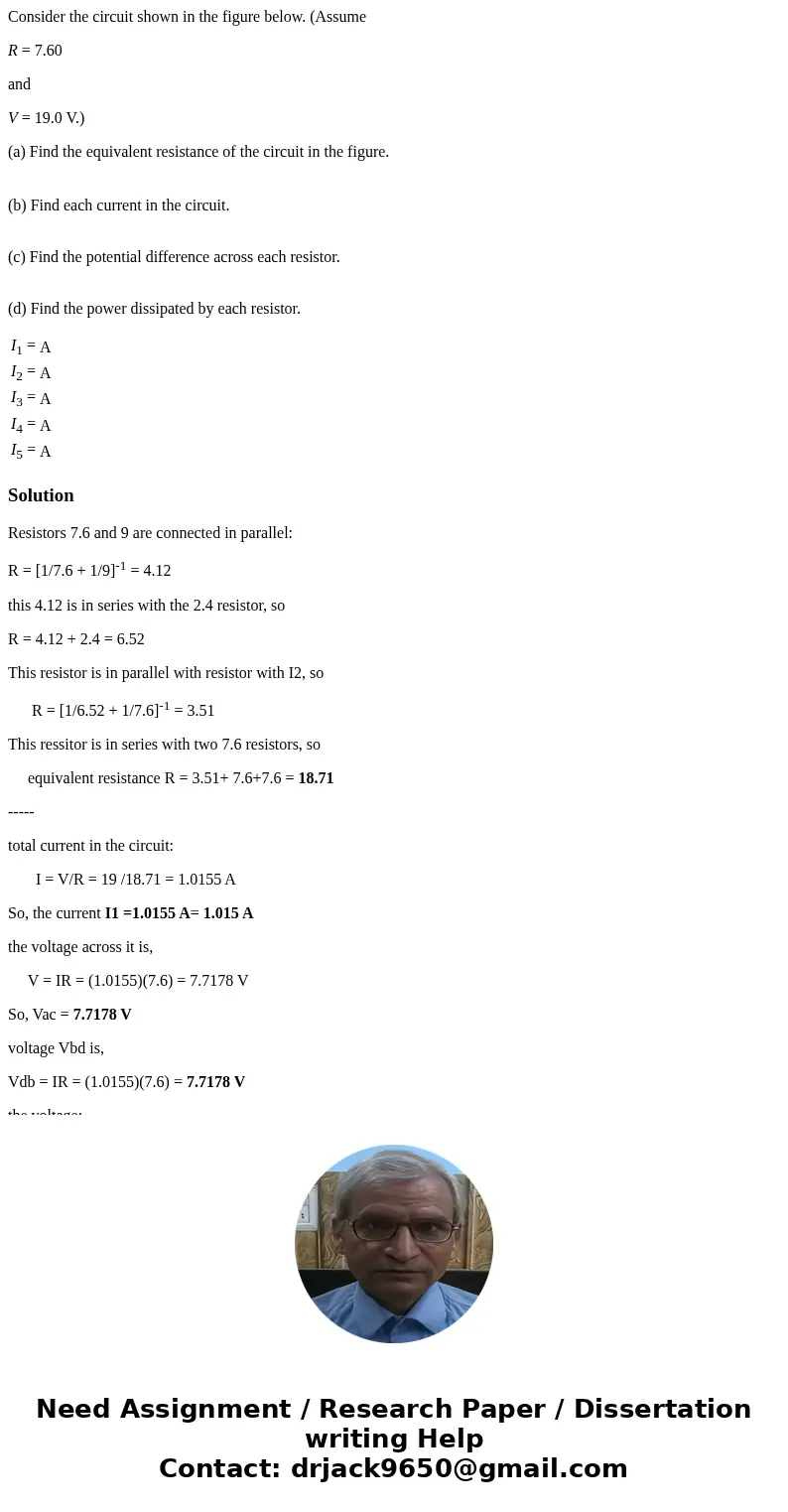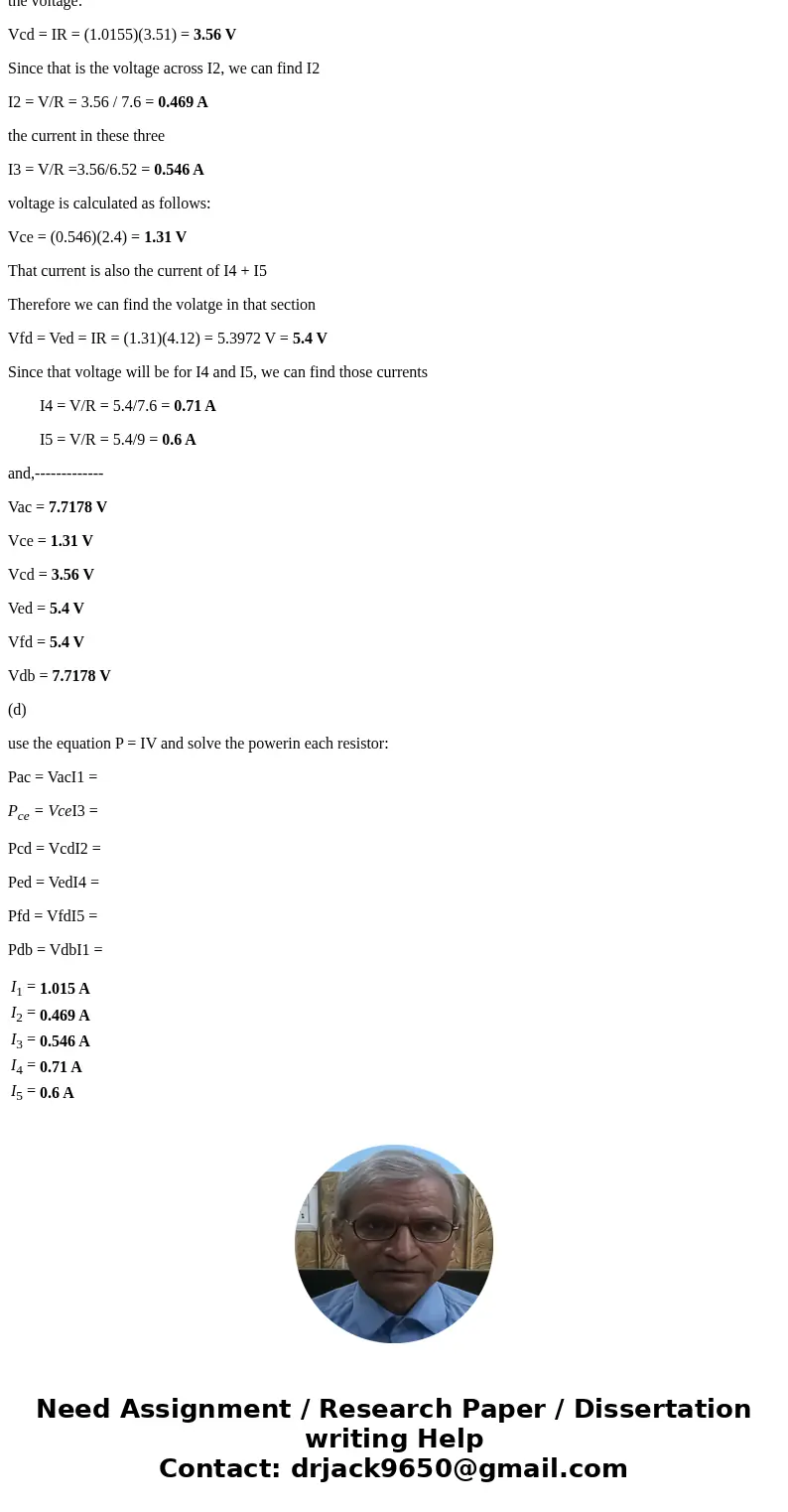Consider the circuit shown in the figure below Assume R 760
Consider the circuit shown in the figure below. (Assume
R = 7.60
and
V = 19.0 V.)
(a) Find the equivalent resistance of the circuit in the figure.
(b) Find each current in the circuit.
(c) Find the potential difference across each resistor.
(d) Find the power dissipated by each resistor.
| I1 = | A |
| I2 = | A |
| I3 = | A |
| I4 = | A |
| I5 = | A |
Solution
Resistors 7.6 and 9 are connected in parallel:
R = [1/7.6 + 1/9]-1 = 4.12
this 4.12 is in series with the 2.4 resistor, so
R = 4.12 + 2.4 = 6.52
This resistor is in parallel with resistor with I2, so
R = [1/6.52 + 1/7.6]-1 = 3.51
This ressitor is in series with two 7.6 resistors, so
equivalent resistance R = 3.51+ 7.6+7.6 = 18.71
-----
total current in the circuit:
I = V/R = 19 /18.71 = 1.0155 A
So, the current I1 =1.0155 A= 1.015 A
the voltage across it is,
V = IR = (1.0155)(7.6) = 7.7178 V
So, Vac = 7.7178 V
voltage Vbd is,
Vdb = IR = (1.0155)(7.6) = 7.7178 V
the voltage:
Vcd = IR = (1.0155)(3.51) = 3.56 V
Since that is the voltage across I2, we can find I2
I2 = V/R = 3.56 / 7.6 = 0.469 A
the current in these three
I3 = V/R =3.56/6.52 = 0.546 A
voltage is calculated as follows:
Vce = (0.546)(2.4) = 1.31 V
That current is also the current of I4 + I5
Therefore we can find the volatge in that section
Vfd = Ved = IR = (1.31)(4.12) = 5.3972 V = 5.4 V
Since that voltage will be for I4 and I5, we can find those currents
I4 = V/R = 5.4/7.6 = 0.71 A
I5 = V/R = 5.4/9 = 0.6 A
and,-------------
Vac = 7.7178 V
Vce = 1.31 V
Vcd = 3.56 V
Ved = 5.4 V
Vfd = 5.4 V
Vdb = 7.7178 V
(d)
use the equation P = IV and solve the powerin each resistor:
Pac = VacI1 =
Pce = VceI3 =
Pcd = VcdI2 =
Ped = VedI4 =
Pfd = VfdI5 =
Pdb = VdbI1 =
| I1 = | 1.015 A |
| I2 = | 0.469 A |
| I3 = | 0.546 A |
| I4 = | 0.71 A |
| I5 = | 0.6 A |


 Homework Sourse
Homework Sourse